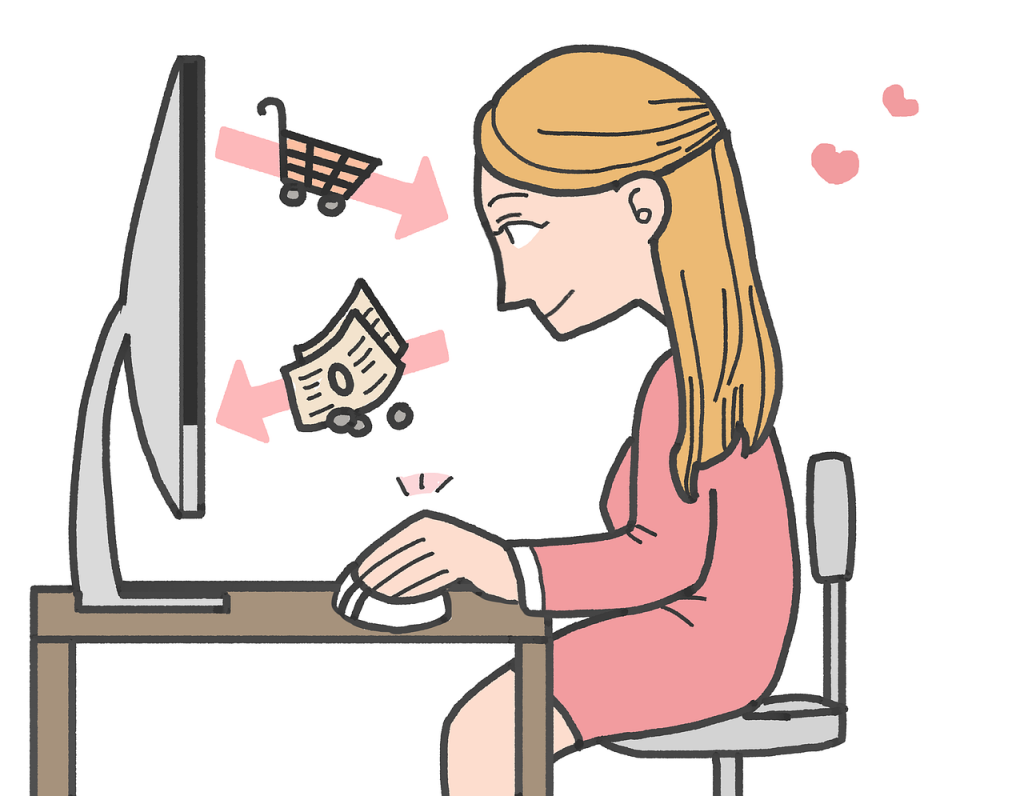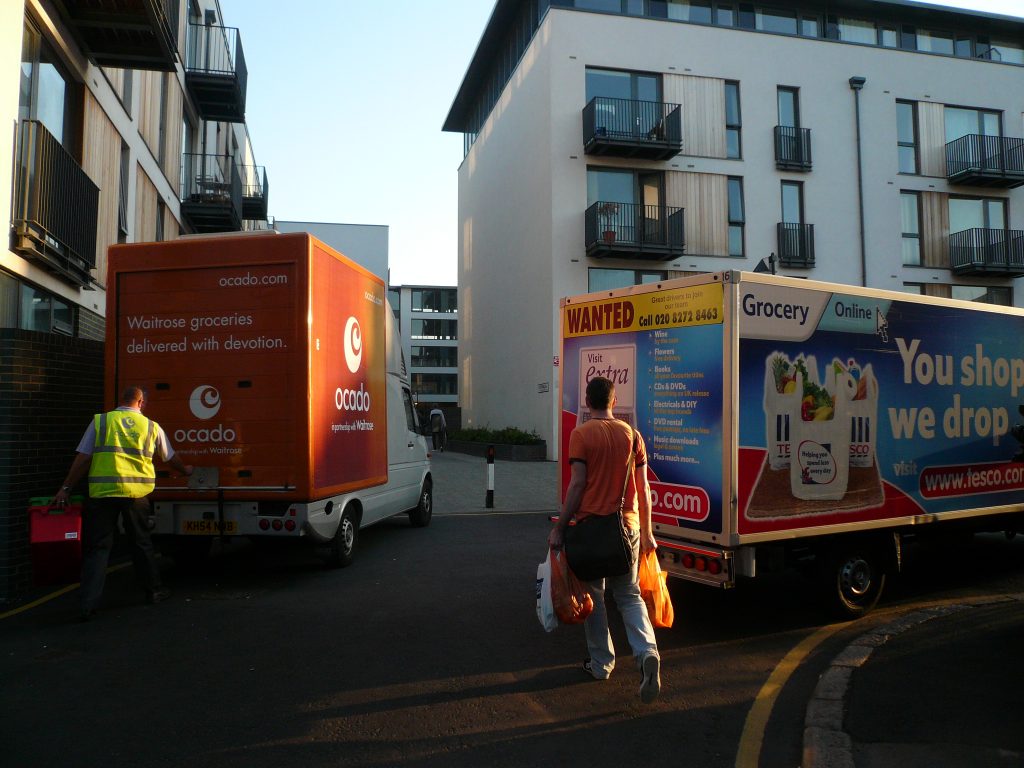
During the 1990s, when the internet was first coming into its own as a sales venue, online grocery businesses such as HomeGrocer and Webvan crashed and burned. It seemed like a natural fit for consumers to use the convenience of online ordering to procure their daily staples, but the traditional grocery business model didn’t translate to an internet version altogether gracefully. As digital sales have grown across the board, entrepreneurs have learned from these early experiments, making online grocery delivery more viable than it ever was.
Online Grocery Delivery Business Plan
Starting an online grocery delivery business will likely require outside capital because it can be an expensive undertaking. Creating a solid and thoughtful business plan will not only give you a valuable tool to present to lenders and investors but it will also provide you with an opportunity to think through important questions whose answers can be vital to your success.
Your business plan should clearly present your short-, medium- and long-term goals and chart a path from your startup format to long-term profitability. This is an important time to think about scale. You may choose to start with a limited delivery area and a modest selection of products to avoid making a prohibitive investment right away. Alternately, if you have considerable experience in the grocery industry or in online marketing, you may opt to pull out the stops and go big right away, which will require you to purchase infrastructure and do enough initial advertising to make a splash.
Whichever trajectory you choose, preparing an online grocery delivery business plan will increase your odds of success by forcing you to do research on the industry. This information will show you where there are openings for new and established models that either build on past successes or offer alternatives to historical mistakes. The financial statement and financial projection section of your business plan will allow you to play out scenarios, including forecasting how much business you will need to transact to break even.

Online Grocery Delivery Platforms
Your online grocery’s platform will be the storefront where actual and potential customers will browse your offerings and place their orders. It should be relatively easy to navigate so customers can find what they’re looking for without growing frustrated and abandoning their cart. At the same time, it should be able to offer suggestions and anticipate customers’ needs and shopping patterns to maximize sales and build on existing preferences.
If you’re reading an article about the online grocery industry rather than hiring a team of consultants, you’re probably going to start relatively small, with limited infrastructure and capacity. It can be prohibitively expensive to launch a venture that can realistically compete with large grocery chains, so if your resources are limited, your best bet will probably be to narrow your focus and appeal to potential customers who are most likely to want and need what you offer. Your grocery delivery business software should reflect these choices.
Your website should also clearly communicate the parameters and limitations of your service while also emphasizing what you do offer. It’s frustrating for a customer to choose a cart full of products only to learn at checkout that you don’t deliver to that customer’s address. A friendly and informative page for frequently asked questions can help to clear up many of these misunderstandings.
Grocery Delivery Storage
Even though your grocery delivery business will take orders online, you will still pack and deliver from a brick-and-mortar location. Unlike specialty art purchased online, groceries are typically purchased because a customer has an immediate or short-term need. You can wait a few extra days to receive an urn or a painting, but if your grocery delivery is delayed, you still have to figure out what to eat for dinner. For this reason, it is critical to have enough inventory on hand to fill orders without having to wait for your stock to be replenished.
At the same time, if you order too much of a perishable product and your customers don’t order enough of the item, you’ll likely get stuck with items that have passed their pull date. You can still sell products that are close to their expiration dates, but doing so could have an effect on your ability to attract repeat customers because if their food turns bad before they can eat it, they’ll be unlikely to order from you again.
You’ll certainly need enough shelving and grocery space to hold and rotate your inventory. If your business sells refrigerated and frozen offerings, you’ll also need commercial refrigerators and freezers, which can be expensive. Assess your needs realistically and try to find a sweet spot between taxing your resources by building too much capacity and limiting your growth potential by not planning for enough.

Planning Grocery Delivery Routes
The delivery arm of your business is your most tangible point of contact with customers. People order online groceries primarily for the convenience, so your delivery schedule should be convenient for your clientele. At the same time, be wary of overcommitting to meet your customers’ needs if doing so creates an unsustainable business model. It may be ideal for your customers if you have a delivery truck in every neighborhood for every two-hour window, but doing so would probably be prohibitively expensive for your business.
You can either take the trouble to schedule delivery times when your customers will be at home or you can use a system for leaving food, ideally in a cooler if the items you deliver are perishable. However, leaving grocery deliveries unattended can be problematic if customers live in areas with high crime rates. In addition, if customers live in apartments, you may have trouble gaining access to leave groceries by their door.
Pack orders so the first bags and boxes you deliver will be the most accessible. If you offer shelf-stable, refrigerated and frozen items as part of the same deliveries, develop a system for keeping track of an order’s different components and retrieving them efficiently at each stop. Track the time it takes to deliver each order and figure these costs into your margins and projections.
Grocery Delivery Business Models
Early online grocery delivery businesses such as HomeGrocer and Webvan failed in part because they were conceived by programmers rather than grocery-industry professionals. The grocery industry operates on slim margins, which weren’t sufficient to support tech-heavy platforms. Although online grocery fulfillment warehouses didn’t have to stay open the same long hours as traditional supermarkets, they did have to carry comparable levels of inventory to be able to fill any orders that arrived.
Subsequent models have revised these early iterations to build on some of the economies of scale that the grocery industry has already achieved. Chains such as Safeway and platforms such as Amazon use physical and digital infrastructure to build onto established businesses. We R Here 4 U LLC uses its platform to provide grocery delivery from existing stores.
Choosing a Business Name
Online grocery delivery business names should reflect the approach that you choose for your business. Decide which aspect of your business model you’re most interested in emphasizing and choose a name that communicates this aspect, whether that be convenience, quality or quirkiness. Have a look around the internet for ideas and see what businesses are flourishing. Then apply your findings to coming up with the perfect name or you.
